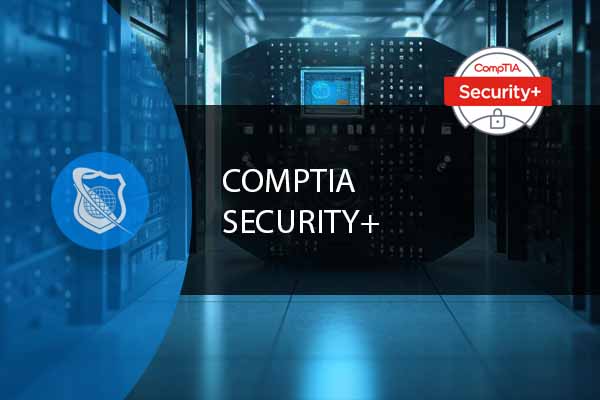One of the most common and disruptive types of cyber threats faced by businesses and organizations are Distributed Denial of Service, DDoS attacks. To understand the magnitude and implications of DDoS attacks, it’s important to break down the terminology and explore the mechanics of how these attacks work.
What is a DDoS Attack?
DDoS stands for Distributed Denial of Service. A DDoS attack is a malicious attempt to disrupt the normal traffic of a targeted server, service, or network by overwhelming the target or its surrounding infrastructure with a flood of Internet traffic.
DDoS vs. DoS: The Difference
While both Denial of Service (DoS) and Distributed Denial of Service (DDoS) attacks share the same goal—to halt legitimate users from accessing a service—they differ in their scale and execution. A DoS attack originates from a single Internet connection, whereas a DDoS attack involves multiple compromised systems, often distributed globally, which are used to generate the attack traffic.
The Mechanics of DDoS Attacks
DDoS attacks utilize multiple compromised computer systems as sources of attack traffic. These can include computers and other networked resources such as IoT devices. The attacker exploits vulnerabilities to take control of these machines, turning them into a botnet (a group of ‘bots’ or zombie computers controlled without the owners’ knowledge). The botnet then targets a specific server or network with requests for data or resources, overwhelming the target’s ability to respond and causing a denial of service for normal traffic.

Information Security Manager Career Path
Propel your career forward and be part of an essential member of any management team as an Information Security Manager. This advanced training series is designed specifically for those want to move up into a management position in the IT field.
Types of DDoS Attacks
DDoS attacks can take various forms, each exploiting different aspects of network architecture and protocols. Understanding the technical nuances of each type helps in crafting more effective defenses. Here are some of the most prevalent types of DDoS attacks:
1. Volumetric Attacks
These are the most common type of DDoS attacks. They aim to exhaust the bandwidth of the victim’s network. Attackers generate large volumes of data packets or requests to overwhelm the target’s ability to handle incoming traffic.
Example: UDP Flood
A UDP Flood is a type of volumetric attack where the attacker sends large numbers of User Datagram Protocol (UDP) packets to random ports on a remote host. As a result, the distant host will repeatedly check for the application listening at that port, find none, and reply with an ICMP ‘Destination Unreachable’ packet. This process exhausts both incoming and outgoing bandwidth.
2. Protocol Attacks
Protocol attacks, also known as state-exhaustion attacks, target network layer or transport layer protocols using weaknesses in the stack to overwhelm targeted resources.
Example: SYN Flood
In a SYN Flood attack, the attacker sends a succession of SYN requests to a target’s system in an attempt to consume enough server resources to make the system unresponsive to legitimate traffic. This is achieved by not finalizing the TCP handshake, which leaves the connection half-open and the server waiting for the acknowledgment that never comes.
3. Application Layer Attacks
These attacks target the layer where web pages are generated on the server and delivered in response to HTTP requests. They are more sophisticated and harder to detect because they can mimic legitimate user behavior.
Example: HTTP Flood
An HTTP Flood is a type of application layer attack where the attacker exploits seemingly legitimate HTTP GET or POST requests to attack a web server or application. These attacks don’t use malformed packets, spoofing, or reflection techniques, and can therefore be difficult to distinguish from legitimate traffic.
Secure Your Networks and Prevent Password Breaches
Our robust CompTIA Sec+ course is the perfect resouce to ensure your company’s most valuable assets are safe. Up your security skills with this comprehensive course at an exceptional price.
4. Multi-Vector Attacks
Multi-vector DDoS attacks use a combination of attack methodologies, simultaneously targeting different components of the network, making mitigation more challenging.
Example: Simultaneous Pings and HTTP Flood
An attacker may deploy simultaneous pings (ICMP Flood) to consume the server’s bandwidth and, at the same time, send HTTP Floods to exhaust server resources. This kind of multi-pronged approach can be particularly devastating as it attacks on multiple fronts.
5. Amplification Attacks
Amplification attacks involve the attacker sending small queries to a vulnerable third-party server, which then sends a much larger response to the target. The goal is to use the third party’s server resources to amplify the volume of the attack.
Example: DNS Amplification
In a DNS Amplification attack, the attacker makes a request to a DNS server with a spoofed IP address (the victim’s IP), causing the server to send a response to the target. The response is much larger than the request, thereby amplifying the volume of data directed at the victim.
6. Resource Depletion Attacks
These are designed to consume specific resources on the targeted system, such as socket connections, CPU, or memory.
Example: Connection Depletion Attack
In this scenario, an attacker might target the finite number of concurrent connections a server can handle. They do this by establishing connections to the server but never completing the handshake or closing the connection, eventually consuming all available connections and denying service to legitimate users.

Cybersecurity Ethical Hacker
To truly harness the full power of ethical hacking, explore ITU’s outstanding course.
What Does a DDoS Attack Mean for Businesses?
For businesses, a successful DDoS attack can result in significant financial losses, damage to reputation, and loss of customer trust. The immediate effect is the unavailability of the service, but the long-term consequences can be much more severe, including the potential for additional breaches while defenses are down.
Preventing DDoS Attacks
Preventing DDoS attacks involves a blend of proactive and reactive measures to mitigate the risk and impact of attacks. Here are several strategies and tools that are commonly used:
1. Risk Assessment and Network Infrastructure
- Redundancy: Build redundancy into your network infrastructure to ensure that if one part is attacked, others can handle the increased load.
- Scalability: Ensure that your infrastructure can scale quickly to handle unexpected surges in traffic.
2. Secure Configuration and Best Practices
- Firewalls: Set up robust firewall rules to filter out malicious traffic.
- Intrusion Prevention Systems (IPS): Use IPS to analyze and take automated actions against traffic anomalies.
- Routers and Switches: Configure routers and switches to rate-limit network traffic and to filter out obvious attack patterns.
3. Anti-DDoS Hardware and Software Solutions
- On-premise Anti-DDoS Appliances: Deploy on-premise hardware solutions that can recognize and mitigate high-volume DDoS attacks.
- Clean Pipes: Use ISP services that ensure that all data passing through the pipes is “clean” of DDoS traffic.
4. Cloud-Based DDoS Protection Services
- Content Delivery Networks (CDNs): CDNs can absorb large amounts of traffic and are designed to scale and block DDoS traffic before it reaches the target.
- DDoS Protection as a Service: There are services from companies like Cloudflare, Akamai, and AWS Shield that provide scalable DDoS protection.
5. Application Front-End Hardware
- Web Application Firewalls (WAFs): Deploy WAFs to monitor HTTP/HTTPS traffic and block nefarious requests.
- Load Balancers: Use load balancers to distribute traffic evenly across servers and mitigate single points of failure.
6. Rate Limiting and Quality of Service (QoS)
- Rate Limiting: Implement rate limiting to prevent your web server from processing too many requests from a single source in a short period.
- QoS Configuration: QoS rules prioritize network traffic to prevent network congestion during an attack.
7. Anomaly Detection Systems
- Behavioral Analysis: Employ systems that use behavioral analysis to detect abnormal traffic patterns.
- Machine Learning: Utilize machine learning tools that adapt and learn from traffic patterns to detect and block suspicious activities.
8. DNS Security
- DNS Security Extensions (DNSSEC): Implement DNSSEC to prevent DNS spoofing and to ensure that your DNS infrastructure can withstand attacks.
9. Regular Testing and Planning
- DDoS Simulation: Regularly perform DDoS simulation tests to evaluate the resilience of your network.
- Incident Response Plan: Develop an incident response plan specifically for DDoS attacks that includes roles, responsibilities, and action steps.
10. Collaboration and Threat Intelligence
- Information Sharing: Participate in industry and government information-sharing initiatives to stay aware of the latest DDoS tactics and indicators of compromise.
- Threat Intelligence Services: Subscribe to threat intelligence services for up-to-date information on DDoS attack vectors and known bad IPs.
11. Patch Management
- Up-to-date Systems: Keep all systems updated with the latest security patches to close vulnerabilities that could be exploited in an attack.
12. Training and Awareness
- Education: Train staff to recognize the signs of a DDoS attack and to respond accordingly.
Choose Your IT Career Path
ITU provides you with a select grouping of courses desgined specfically to guide you on your career path. To help you best succeed, these specialized career path training series offer you all the essentials needed to begin or excel in your choosen IT career.
Examples of Tools Used for DDoS Prevention:
- Arbor Networks: Offers network visibility and DDoS protection tools.
- F5 Networks: Provides on-premise and cloud-based DDoS protection.
- Radware: Offers both on-premise and cloud DDoS protection services.
- Fortinet: Delivers high-performance network security solutions that protect against DDoS attacks.
- Check Point: Offers comprehensive cyber security solutions including DDoS protection.
- Cloudflare: Provides a cloud-based DDoS mitigation service with a global CDN.
- Akamai: Offers cloud-based DDoS protection and CDN services.
It’s important to note that DDoS attacks cannot always be prevented, but the impact can be significantly reduced with the right combination of tools and strategies. Building a multi-layered defense strategy that incorporates the above measures can help organizations protect against both the volume-based and application-based DDoS attacks. Regular updates, vigilant monitoring, and quick response are key components of effective DDoS prevention and mitigation.
The Legal and Ethical Aspect
It’s important to note that conducting a DDoS attack is illegal. Tools and services that claim to offer DDoS capabilities “for free” or “online” are often scams or traps to exploit users or are used for malicious intent and can result in severe legal consequences.
Conclusion
Understanding DDoS attacks is crucial for anyone who operates online services. While the threat of DDoS attacks cannot be entirely eliminated, with the right knowledge and tools, businesses can significantly mitigate the risk and ensure that their services remain accessible and secure.
In summary, DDoS attacks are a significant threat in the cyber world. Proper education, preparation, and investment in security infrastructure are key to defending against these potentially devastating attacks. It’s a collective effort among business owners, security professionals, and users to maintain a safe and secure internet environment for all.
Key Term Knowledge Base: Key Terms Related to DDoS Attacks
Understanding the terminology associated with DDoS (Distributed Denial of Service) attacks is crucial for cybersecurity professionals and anyone interested in safeguarding their digital assets. DDoS attacks are a prevalent threat in the digital world, aiming to overwhelm a system, network, or website with traffic from multiple sources, rendering it inaccessible to intended users. Here’s a list of key terms that will help you navigate the complexities of DDoS attacks:
| Term | Definition |
|---|---|
| DDoS Attack | A cyber-attack where the perpetrator seeks to make a machine or network resource unavailable to its intended users by temporarily or indefinitely disrupting services of a host connected to the Internet. |
| Botnet | A network of private computers infected with malicious software and controlled as a group without the owners’ knowledge, e.g., to send spam messages or to launch DDoS attacks. |
| Traffic Flood | The overwhelming amount of data sent to a targeted server or network in a DDoS attack, intended to exceed the capacity limits and cause denial of service. |
| Volumetric Attacks | A type of DDoS attack that floods the bandwidth of the targeted site with immense volumes of traffic to overwhelm the network. |
| Protocol Attacks | DDoS attacks that exploit protocol vulnerabilities to consume significant amounts of processing capacity, potentially causing service disruption. |
| Application Layer Attacks | Attacks targeting weaknesses in an application or server, aiming to exhaust resources and make the service unavailable. |
| IP Spoofing | The creation of Internet Protocol (IP) packets with a forged source IP address, used in DDoS attacks to mask the identity of the attacker and to direct responses to the victim. |
| Amplification Attack | A DDoS attack technique that uses publicly accessible open DNS servers to flood a target with DNS response traffic. |
| Reflection Attack | A method that involves sending requests to a third-party server with a forged sender address, causing the server to reply and direct a large response to the target. |
| SYN Flood | A form of DDoS attack in which an attacker sends a succession of SYN requests to a target’s system in an attempt to consume enough server resources to make the system unresponsive to legitimate traffic. |
| Ping of Death | An attack that involves sending malicious or malformed pings to a computer. |
| Smurf Attack | A DDoS attack that exploits Internet Protocol and Internet Control Message Protocol to flood a target with traffic. |
| Bot | A software application that runs automated tasks (scripts) over the Internet. In the context of DDoS, bots are often part of a botnet used to perform the attack. |
| Command and Control (C&C) Server | A computer controlled by a cybercriminal used to send commands to systems compromised by malware and controlled in a botnet. |
| Mitigation | Actions taken to reduce the severity or eliminate the effects of a DDoS attack. |
| Load Balancer | A device that distributes network or application traffic across a number of servers to enhance the performance, efficiency, and availability of services. |
| Rate Limiting | A technique used to control the amount of incoming and outgoing traffic to or from a network. |
| Web Application Firewall (WAF) | A security measure designed to monitor, filter, and block data packets as they travel to and from a website or web application. |
| Anycast | A network addressing and routing methodology in which incoming requests can be routed to a variety of locations or “nodes” to reduce latency and improve load balancing. |
| DNS Flood | A DDoS attack that targets a specific domain’s DNS servers and attempts to overwhelm them with a flood of UDP requests, resulting in denial of service. |
| NTP Amplification | A type of DDoS attack that exploits public Network Time Protocol (NTP) servers to overwhelm a targeted network or server with UDP traffic. |
| Zero-Day Exploit | A cyber-attack that occurs on the same day a weakness is discovered in software, before a fix becomes available. |
| Peer-to-Peer Attacks | DDoS attacks that exploit vulnerabilities in peer-to-peer networks to direct excessive traffic to a targeted website or server. |
These terms provide a foundation for understanding the strategies behind DDoS attacks and the defenses used to counteract them. As cyber threats evolve, staying informed about these concepts is essential for maintaining robust cybersecurity measures.
Frequestly Asked Questions Related to DDoS Attacks
What is a DDoS attack and how does it work?
A Distributed Denial of Service (DDoS) attack is a malicious attempt to disrupt normal traffic to a targeted server, service, or network by overwhelming the target or its surrounding infrastructure with a flood of Internet traffic. DDoS attacks achieve effectiveness by utilizing multiple compromised computer systems as sources of attack traffic. These can include computers and other networked resources such as IoT devices.
How can I tell if my network is under a DDoS attack?
Symptoms of a DDoS attack can include:
Unusually slow network performance (opening files or accessing websites)
Unavailability of a particular website
Inability to access any website
A dramatic increase in the amount of spam emails received
These symptoms could also indicate other types of issues, so it’s important to investigate further to determine if a DDoS attack is indeed the cause.
What are the different types of DDoS attacks?
DDoS attacks can be categorized by their approach. Some common types include:
Volume-based attacks: These include UDP floods, ICMP floods, and other spoofed-packet floods. The attack’s goal is to saturate the bandwidth of the targeted site.
Protocol attacks: These include SYN floods, fragmented packet attacks, Ping of Death, Smurf DDoS, etc., and are aimed at exploiting server resources.
Application layer attacks: These are more sophisticated and target web application packets to disrupt transactions and services.
Can DDoS attacks steal data or cause data breaches?
DDoS attacks typically don’t result in data breaches or data loss. Their primary purpose is to overwhelm resources and disrupt service. However, they can be used as a smokescreen for more sinister attacks that can lead to data theft or loss.
What measures can I take to protect my network against DDoS attacks?
To protect against DDoS attacks, you should:
Implement robust network security measures including firewalls, intrusion detection systems, and anti-DDoS software.
Engage a DDoS protection service that can absorb DDoS traffic before it reaches your network.
Keep your network infrastructure and software up to date with the latest security patches.
Develop an incident response plan specifically for DDoS attacks.
Regularly back up and store critical data offsite or in a cloud environment.
DDoS attacks are constantly evolving in complexity and intensity, so staying informed about the latest protection methods and services is crucial for maintaining effective defenses.


























